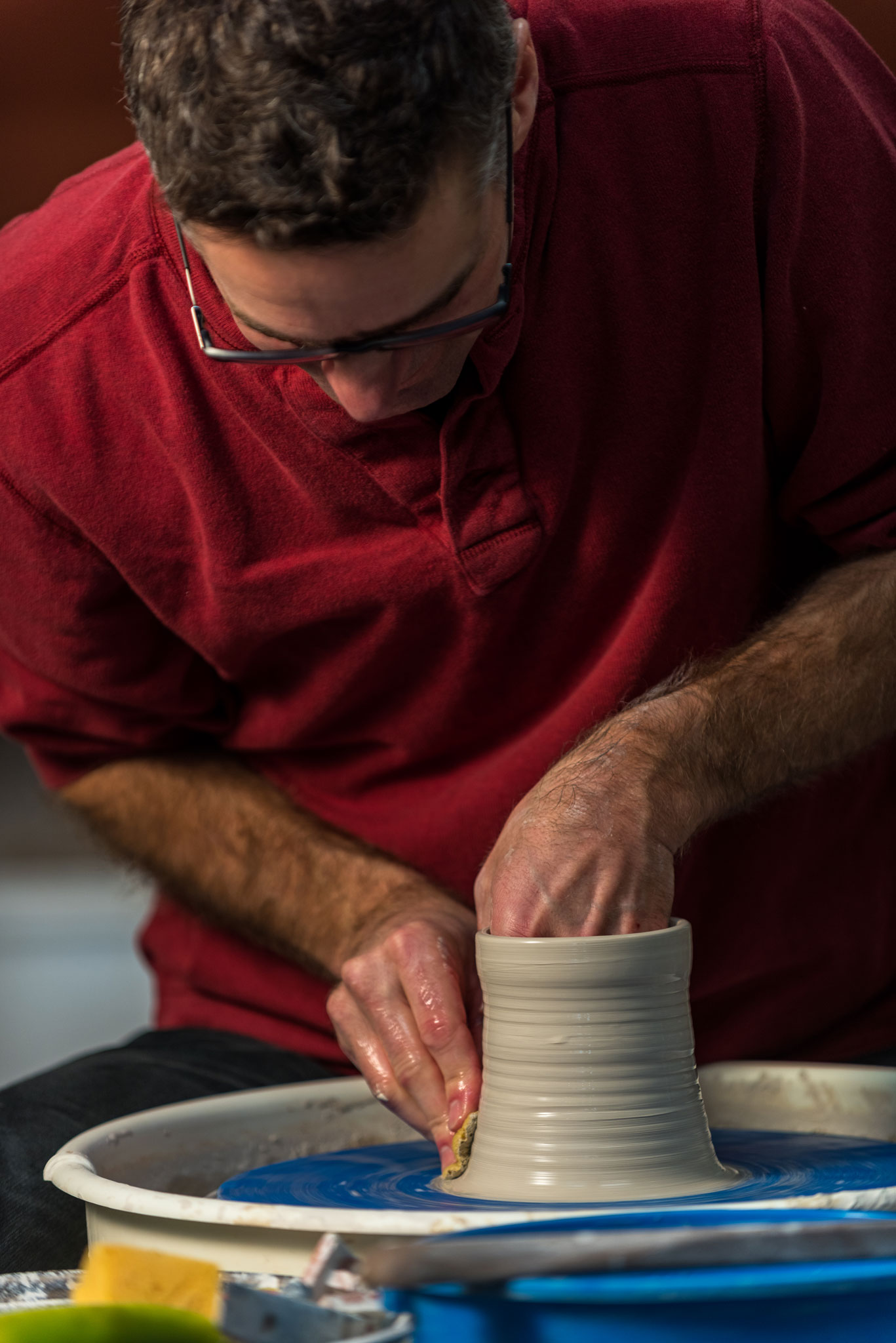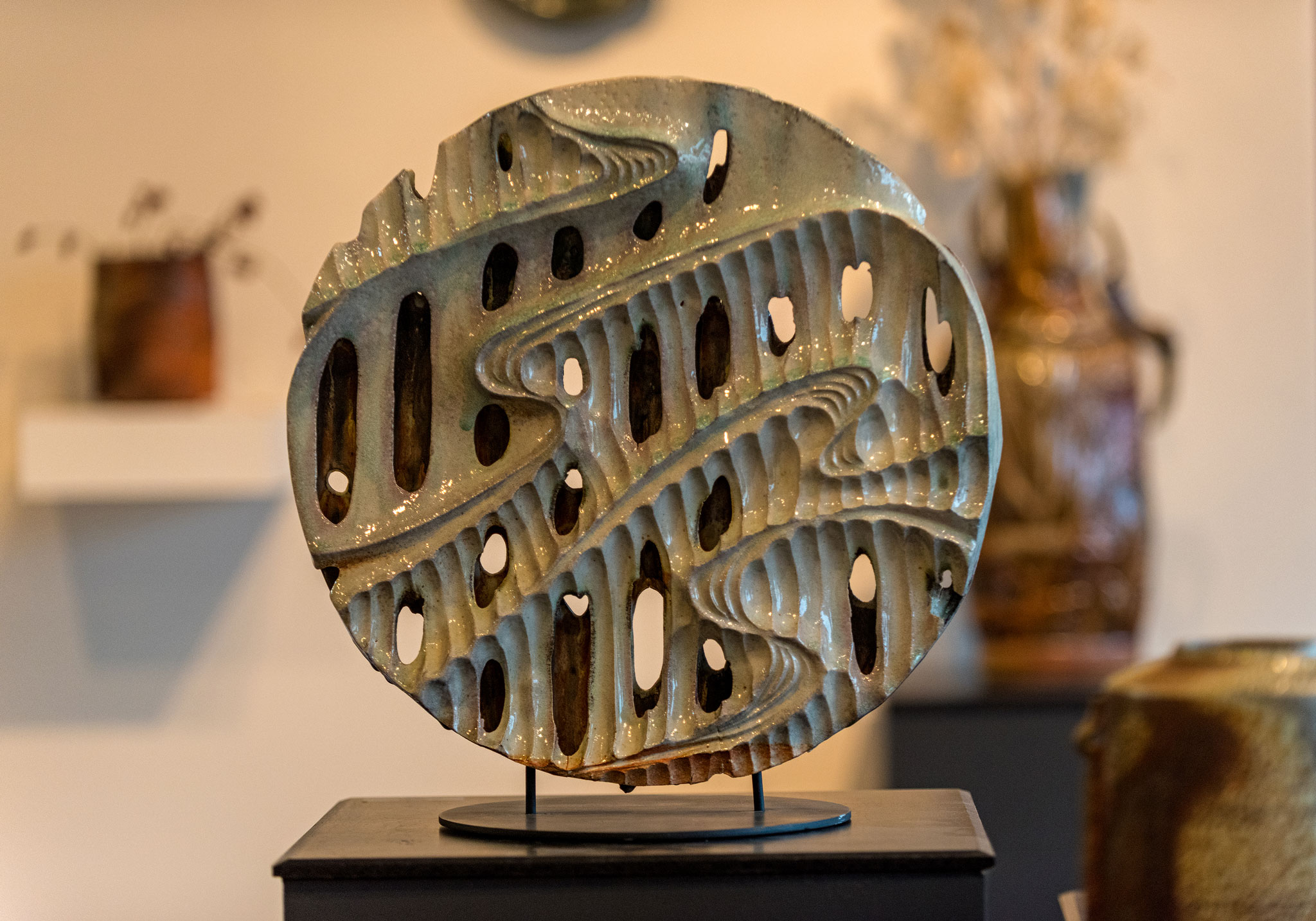Artist Chris Kelsey uses raw emotion to invent his unique style of ceramics sculpture.
Becoming a rock star was a definite option for Chris Kelsey.
When he was 12 years old, his middle school friends needed a drummer for their new band, and Chris knew he could fi ll the part. After some begging, drum lessons were a go and fame was on its way. Even as band practices became fewer, Chris stuck with it.
In high school, he quit his job to join the up-and-coming local band Big Trouble. He spent late nights rocking out in bars, tossing drumsticks out to the crowd and coming home so sweaty and exhausted he turned the sheets yellow. For Billings, Mont., Chris made it big.
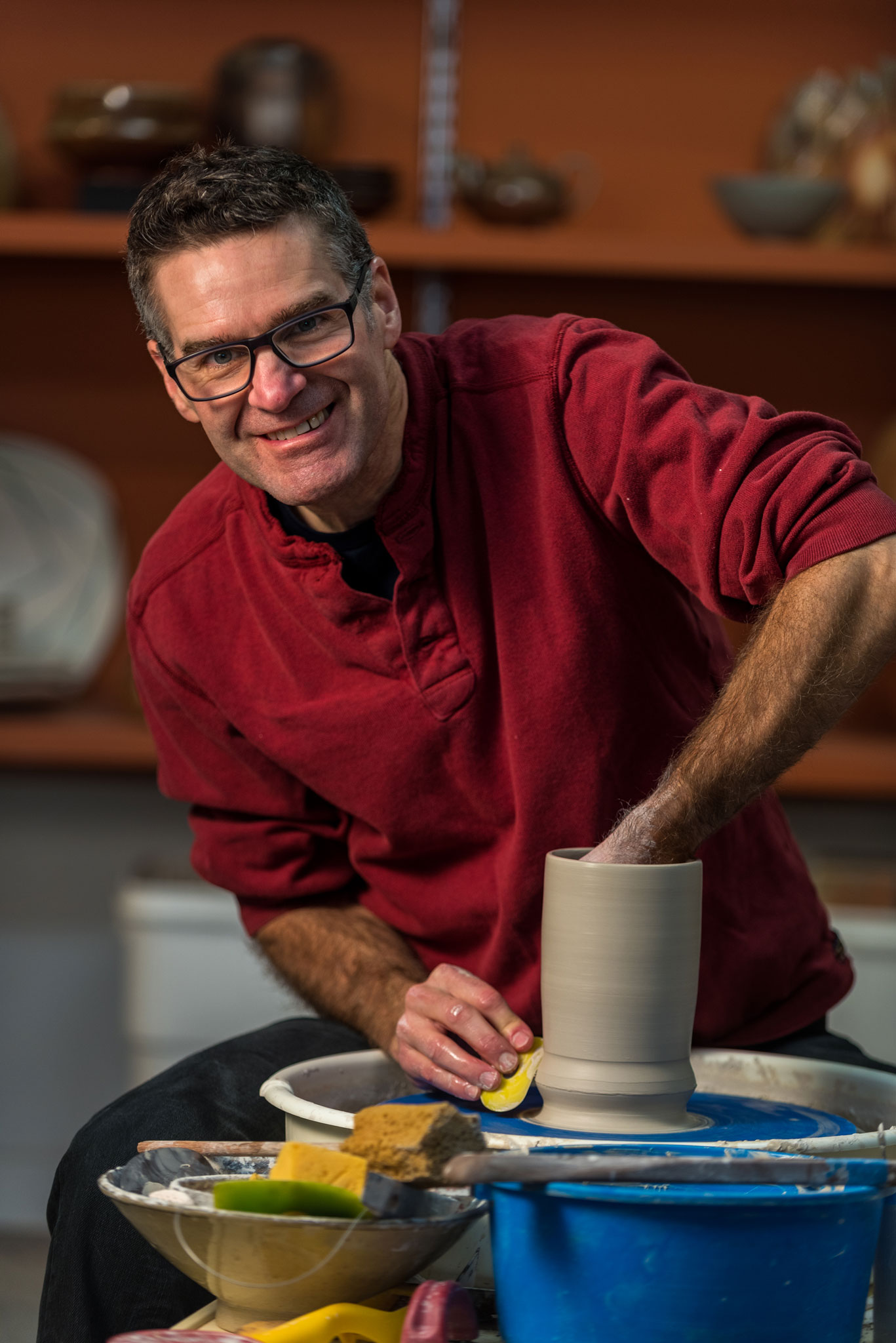
Now, as the co-owner of Spokane’s Trackside Studio, Chris doesn’t play the drums much anymore. Trading his drumsticks in for clay, he creates unique ceramic sculptures that can’t be found anywhere else but in Spokane.
“I’ve always had creative tendencies,” Chris says. “From drawing airplanes in elementary school to getting my art degree [at Montana State University], things just rolled along. Creating art, creating feelings just was right for me.”
» Passion emerges
After experimenting with music and photography, Chris finally landed on sculpture. Although he didn’t enjoy the required pottery classes in art school, Chris developed a passion for clay.
“Pottery is a learning curve,” Chris says. “I love the tradition of pottery. I love the artists who create something unique, something that isn’t mass produced at Pottery Barn. I knew I wanted to use clay, but didn’t have enough patience for pottery. I thought, ‘if I didn’t have to do pottery, then I can find a way to use clay for something else.’”
Chris played around with clay, but didn’t have a unique style to his ceramic creations until he lost a friend. Out of anger and frustration, he threw a thick slab of clay onto his workstation and began to ram it with a broomstick. Then he took a heavy cable and began ripping the clay apart.
After his emotions settled, he took a step back to take in his tantrum-made piece. Holes ran through the clay, revealing the deep, hidden layers most clay sculptures don’t reveal. The clay was broken, peeling and tattered. The once clean-cut block of clay now looked like a mound of dirt eroded from a rainstorm.
Chris really liked it.
“My early pieces were really rough because they were created out of anger and emotion,” he says. “I was obsessed with roughness, making the clay look as torn and gunky as possible.”
When his feelings of loss and bitterness lifted, Chris began refining and recreating his original piece by taking different sized dowels and wiggling them through slabs of clay. Instead of brooms and cables, Chris grabbed some carving tools and began prodding at the clay.
“I haven’t felt that type of raw emotion since then,” he says. “Now I create with a different type of emotion. I think about my ideas, the current environmental state of the earth and the political climate around me.”
» Unique style
Chris began creating pieces that looked off-center and unstable, as if they could break apart or fall off their podium at any minute. He was inspired by geology, the way the earth’s cycles never fail to crumble rock and clay.
He collected his pieces together. He had never seen anything like it before.
He likes to think he invented the emotional style of ceramic sculpture. Only once he saw something like it at a clay museum in Italy. On display were clay sculptures with big notches and extruding pieces — but still. It was nothing like he was creating.
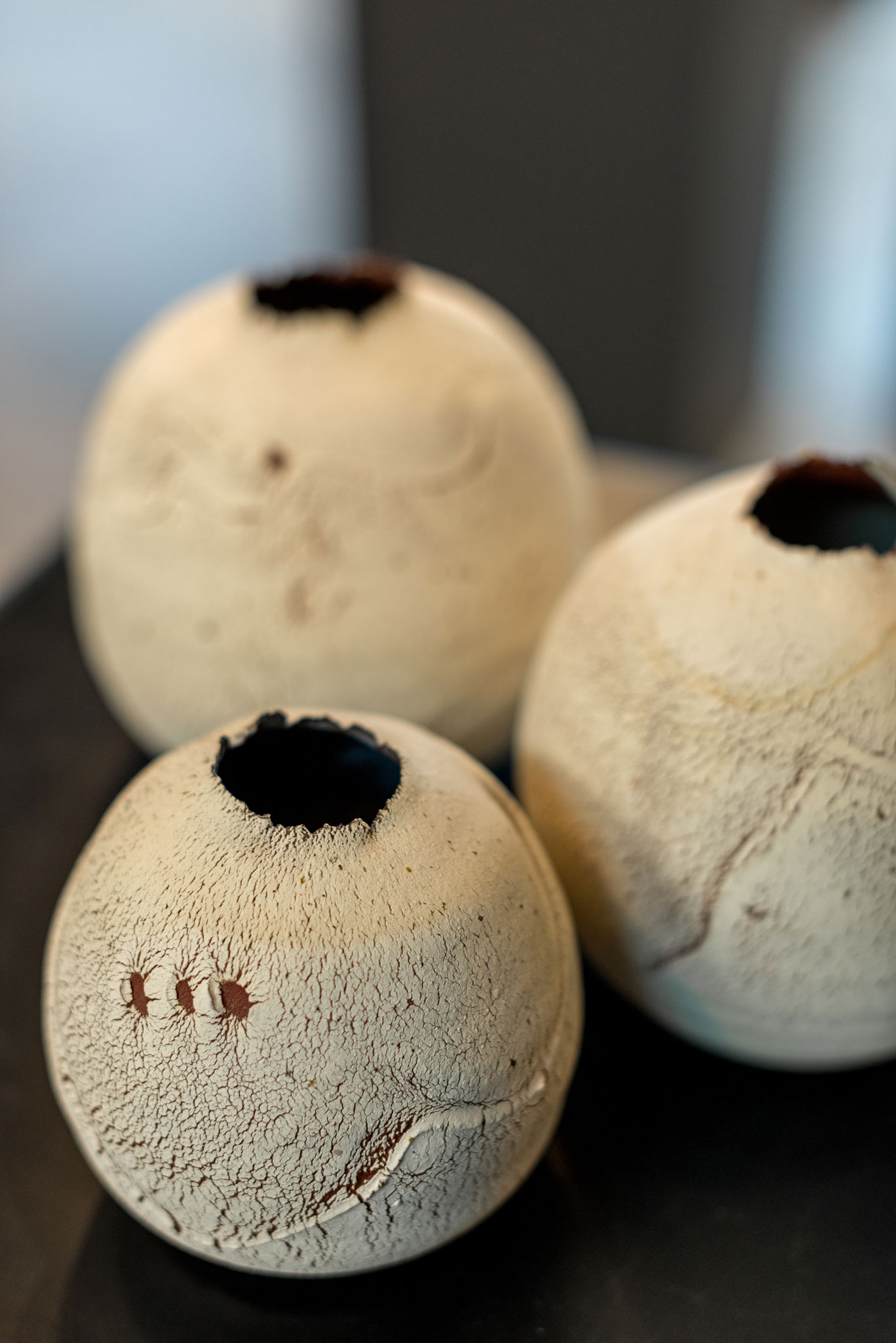
“I’m inspired by the process and mystery of every piece I create,” he says. “In the beginning, clay is a structure. I expose the inner tubing and make-up. The last stage is the reveal.”
To make his pieces even more raw and vulnerable, Chris likes to fi re his sculptures in “atmospheric” or wood kilns. These kilns, which run upward of 1,000 degrees fahrenheit, rely on high-pressure chambers causing combustion of the wood to create ash filled with various minerals, metal oxides and chemicals that melt on the ceramics. Unlike many modern potters who turn to electric or gas kilns to ensure their finishing glazes and paints will come out the same way they went in, he enjoys uncertainty more than the peace of mind.
“Electric kilns are like big toasters that give you guaranteed results,” he says. “Wood firing is like alchemy. Because of the ash and gunk, there are no two fi rings that look the same.”
Chris likes firing his pieces in an ancient Japanese style kiln built in a friend’s back yard. The tunnel-like “anagama kiln” can take anywhere from several days to two weeks to harden the clay and requires continuous fueling. For this reason, Chris only creates three or four new pieces a year.
To create additional layers of “gunk,” he likes to glaze his pieces with soda — not the drinking kind. Sodium calcium carbonate, a combination better known as baking soda and sports-drink electrolytes, vaporizes and swirls around on the surface of the sculptures, creating unique patterns and textures.
“With my work, I like to create feelings of alienation and the struggle for power,” he says. “I’ve had people tell me my pieces are playful, pretty and whimsical. I’ve never thought of them that way. To me, they convey change, thought and power. But people can connect to my art without meaning. Maybe they feel something I haven’t.”
Lack of color is another trait that gives Chris’ ceramic sculptures a unique personality.
He likes to work in white to create high-contrast shadows within the tunnels and hills on his sculptures. When one of his disk ceramics or wall-hangings are put against a white wall, onlookers feel as though they can look through the wall.
Chris also likes to work in earth tones, encouraging his wood kiln to change the color of his pieces. He says his favorite part of being a ceramic artist is grouping his sculptures together.
“I like to make shapes that react and communicate with each other,” he says. “Many of my pieces have a dialogue, and that dialogue changes based on the proximity of the pieces.”
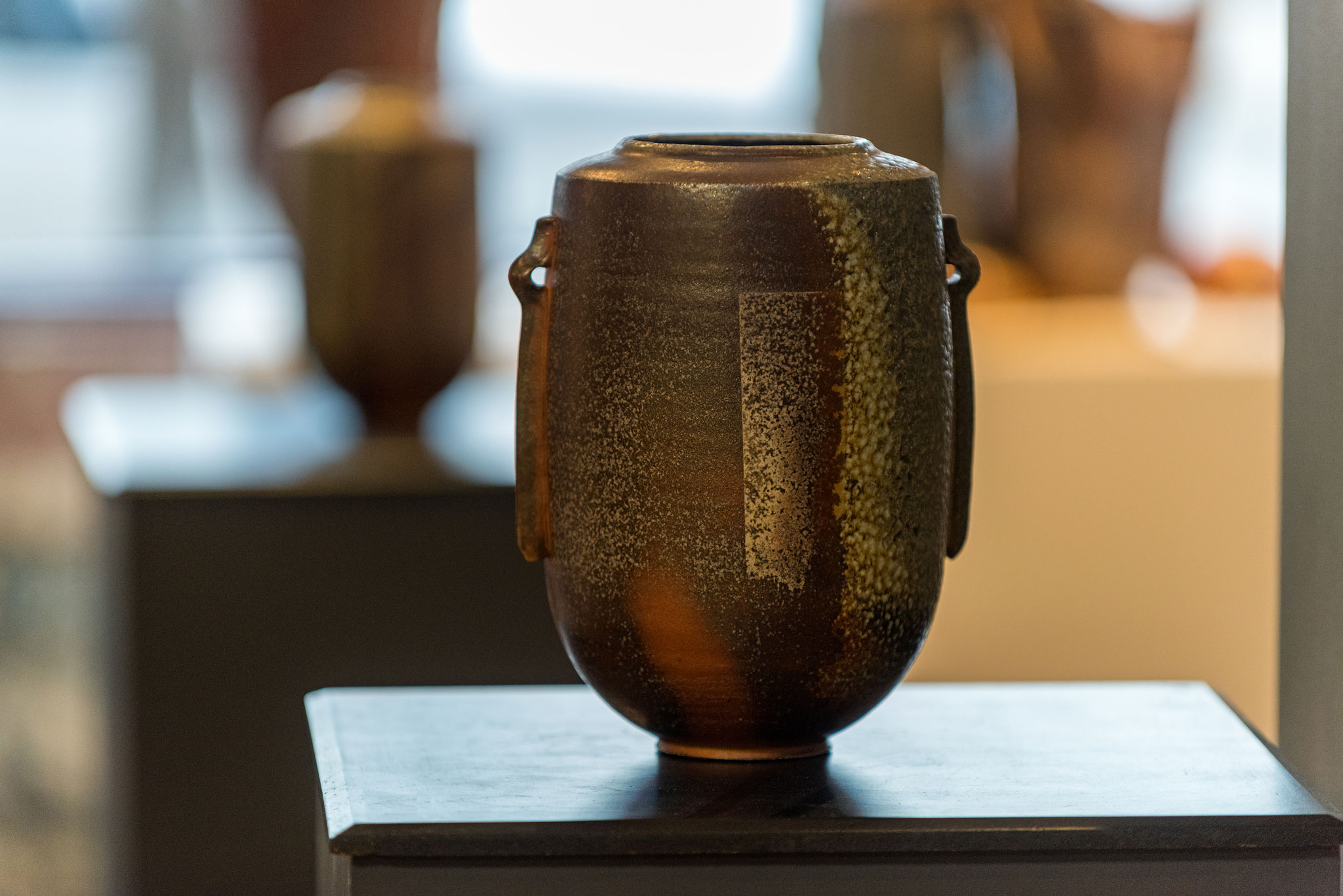
» Home base
Chris’ ceramic creations live in Atticus Coffee and Gifts, Coeur d’Alene’s Art Spirit Gallery, the Corner Gallery at North Idaho College, the Moses Lake Art Museum and more. He has also been featured in a juried art show in San Diego.
His artwork has a permanent home in his exclusively ceramic gallery, Trackside Studio. Here, Chris and his partners host ceramic workshops and three ceramic shows a year, inviting local ceramic educators and famous ceramic artists to share their art.
The studio’s most popular display is the annual “Cup Show,” where local artists submit over 100 cups.
Some cups are functional, some cups are not. The interpretation of theme is left completely up to the artist, whether a newbie or a pottery veteran.
During the school year, the gallery also hosts “Wednesday Get Togethers,” where local ceramic artists are encouraged to bring a chair and a drink and show off their work. Chris says it’s a fun way to get the local pottery community together in one room.
“Connecting the ceramics com-munity is important to me,” he says. “Building relationships between new artists and seasoned Gon-zaga ceramics instructors is how we create community.”
Chris has a passion for sculpture and ceramic arts. His goal is to live off clay as long as he can. Although, a part of him still wonders what would’ve happened if he kept the drumsticks and became the next Ringo Starr.
But, on second thought, he never wants to see those yellow sheets again. N
By Rosemary Anderson
Photography By Joel Riner
As Featured In: 2019 Winter/Spring SPO Edition
